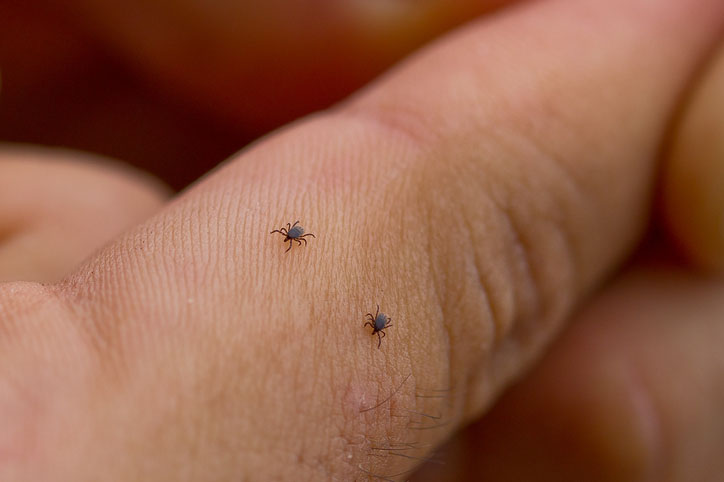Tsetse Flies
- Flies
- Overview of Flies
- Dipterans with Biting Mouthparts
- Black Flies
- Sand Flies
- Biting Midges
- Mosquitoes
- Horse Flies and Deer Flies
- Stable Flies
- Horn Flies
- Buffalo Flies
- Tsetse Flies
- Sheep Keds
- Spider Flies/New Forest Flies
- Hippoboscid or Louse Flies
- Dipterans with Nonbiting Mouthparts
- Face Flies
- Head Flies
- Filth-breeding Flies
- Eye Gnats
- Dipterans that Produce Myiasis
- Facultative Myiasis-producing Flies
- Obligatory Myiasis-producing Flies
- Pseudomyiasis
The tsetse flies, Glossina spp, are important blood-feeding flies found in Africa (latitude 5°N to 20°S). Tsetse flies are narrow bodied, yellow to dark brown, and 6–13.5 mm long. When resting, their wings are held over the back in a scissor-like configuration. The thorax has a dull greenish color with inconspicuous spots or stripes. The abdomen is light to dark brown.
Both sexes are avid blood feeders. One copulation renders a female fly fertile for her lifetime, during which she can produce as many as 12 larvae. She produces one larva at a time, retaining it within her uterus; after ~10 days, the larva is deposited on loose, sandy soil, where it digs in and begins pupation within 60–90 min. This pupation period averages ~35 days, after which the adult emerges. Adult flies feed avidly on vertebrate blood approximately every 3 days.
Pathology:
Tsetse flies serve as the intermediate hosts for several species of trypanosomes that cause fatal diseases of both domestic animals (nagana) and people (African sleeping sickness). Trypanosomes invade the blood, lymph, CSF, and various organs of the body, such as the liver and spleen. Nagana, a related complex in cattle caused by Trypanosoma brucei, has occurred throughout enormous areas estimated to be as great as one quarter of the African continent. The disease is fatal to horses, mules, camels, and dogs. Cattle, sheep, and goats usually survive, except when parasitized by certain strains. Many wild ungulates native to Africa show no evidence of harm. (Also see Trypanosomiasis.)
Diagnosis:
Treatment and Control:
- Flies
- Overview of Flies
- Dipterans with Biting Mouthparts
- Black Flies
- Sand Flies
- Biting Midges
- Mosquitoes
- Horse Flies and Deer Flies
- Stable Flies
- Horn Flies
- Buffalo Flies
- Tsetse Flies
- Sheep Keds
- Spider Flies/New Forest Flies
- Hippoboscid or Louse Flies
- Dipterans with Nonbiting Mouthparts
- Face Flies
- Head Flies
- Filth-breeding Flies
- Eye Gnats
- Dipterans that Produce Myiasis
- Facultative Myiasis-producing Flies
- Obligatory Myiasis-producing Flies
- Pseudomyiasis





